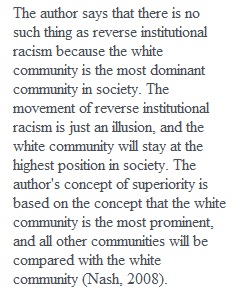


Q 1. What do the authors mean when they say there is no such thing as "reverse institutional racism"?2. How does the concept of intersectionality help us understand how people are differently positioned in society?3. The authors argue that white is not "just another" racial category; it is the dominant category with which all other categories are compared and contrasted. What are some examples from the text or from your own experiences that illustrate this concept?
View Related Questions